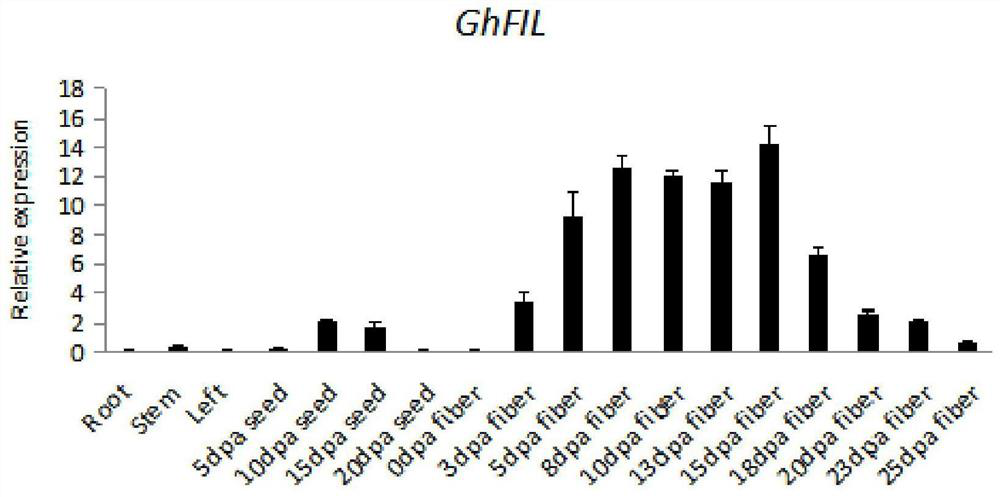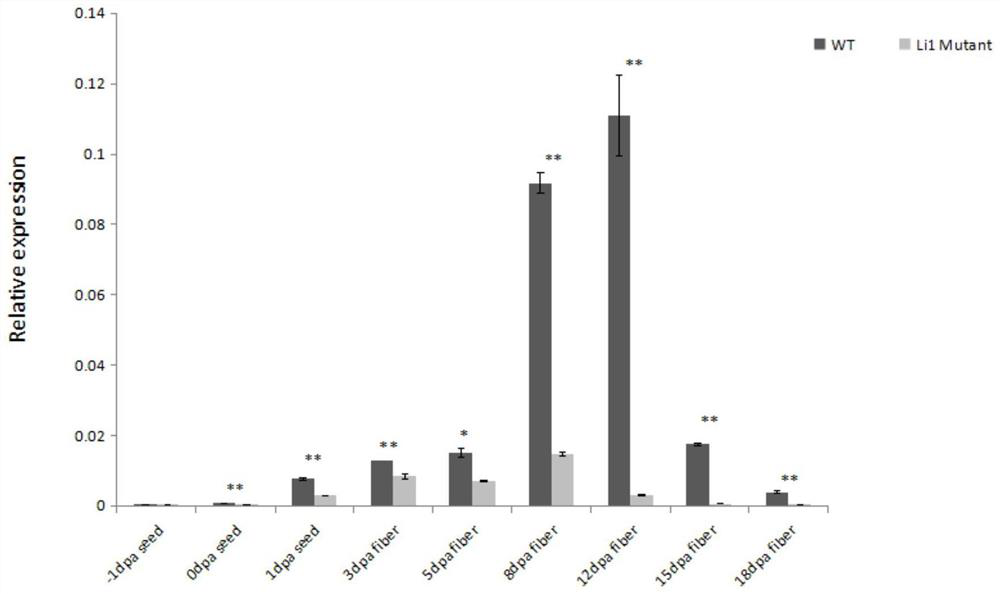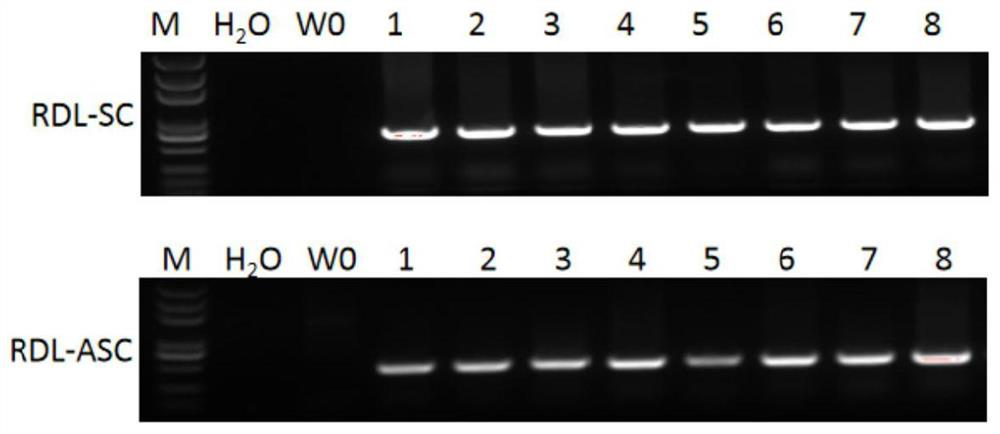Application of cotton fat transporter gene GhFIL in improvement of cotton fiber quality
A technology for transporting proteins and cotton fibers, applied in the field of biotechnology applications, can solve problems such as unclear sphingolipids, and achieve the effect of improving the quality of cotton fibers
- Summary
- Abstract
- Description
- Claims
- Application Information
AI Technical Summary
Problems solved by technology
Method used
Image
Examples
Embodiment 1
[0064] Example 1 The full-length sequence of the cotton lipid transporter GhFIL was obtained:
[0065] By constructing the 7124-3-6DPA ovule / fiber cDNA library (GB1) and the 6-24DPA fiber cDNA library (GB2), the differential expression analysis of EST showed that there were 2260 unigenes in the two libraries. Based on bioinformatics analysis and gene structure and function research, nine genes encoding 120 amino acid sequences and encoding lipid transfer protein were obtained, which were named LTP1-LTP9 respectively. Among them, LTP4 is obviously dominantly expressed in the stage of fiber development, so it is named as FIL. Therefore, according to the existing sequence, PCR amplification primers were designed to amplify the full-length ORF of the gene (GhFIL) from upland cotton TM-1. The primers used for amplification are listed in Table 1.
[0066] Table 1: Primers used for amplification
[0067]
Embodiment 2
[0068] Example 2 Quantitative RT-PCR Analysis of Cotton Fat Transporter Gene GhFIL
[0069] Design specific primers for GhFIL:
[0070] F:5'-TTACTTGACAGGGAATGGTGC-3'
[0071] R: 5'-GTCCGCTTGCAATACCATAG-3'
[0072] In different tissues and organs, quantitative qRT-PCR detection was carried out. The result shows that this gene is expressed very low in root, stem, and leaf, and it is differentially expressed in different stages of fiber development, wherein the expression level gradually increases in the 8-15 days of the rapid fiber elongation period, and the subsequent expression level gradually decreases (such as figure 1 and figure 2 shown).
Embodiment 3
[0073] Example 3 Verification of transgenic function of cotton lipid transporter gene GhFIL
[0074] pCAMBIA2301 is a traditional plant binary expression vector, and its promoter is the promoter of cotton fiber predominantly expressed gene RDL. Based on this, a sense-antisense binary vector of RDL promoter was constructed, and the insertion position of the sense-antisense fragment was between RDL-P (promoter) and Nos-T (terminator).
[0075] Construct the sense and antisense plant expression vector with the full-length fragment of the sequence of the gene SEQ NO ID.1 of the present invention. After the construction is completed, transform cotton through the Agrobacterium-mediated method for functional verification, and obtain the sense and antisense transgenic plants of the RDL promoter. The above two vectors All transgenic plants have been identified by PCR (such as image 3 shown). Expression analysis found that in the sense vector transgenic plants, the expression of this...
PUM
 Login to View More
Login to View More Abstract
Description
Claims
Application Information
 Login to View More
Login to View More - R&D
- Intellectual Property
- Life Sciences
- Materials
- Tech Scout
- Unparalleled Data Quality
- Higher Quality Content
- 60% Fewer Hallucinations
Browse by: Latest US Patents, China's latest patents, Technical Efficacy Thesaurus, Application Domain, Technology Topic, Popular Technical Reports.
© 2025 PatSnap. All rights reserved.Legal|Privacy policy|Modern Slavery Act Transparency Statement|Sitemap|About US| Contact US: help@patsnap.com



